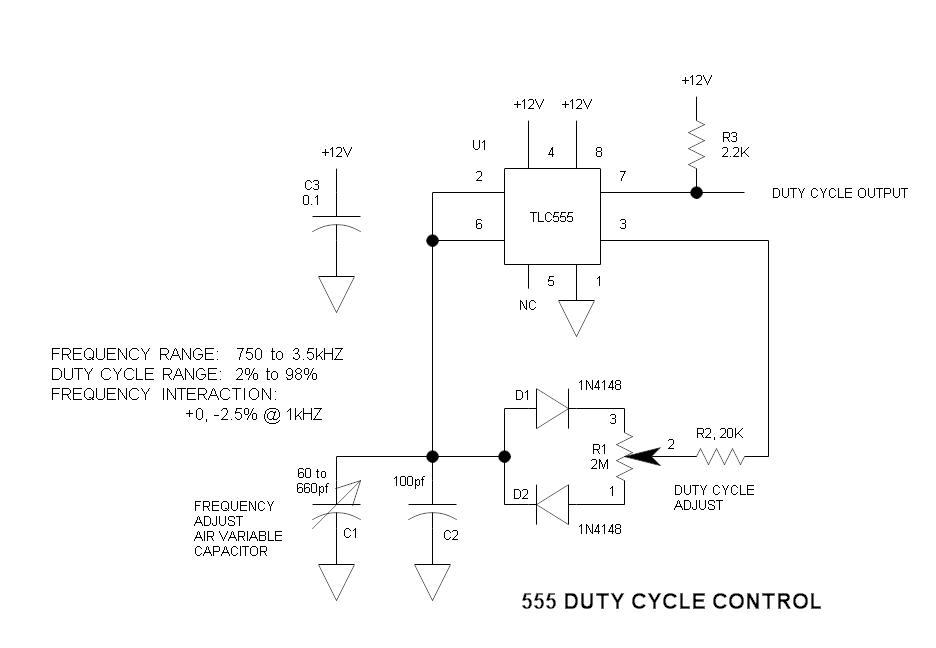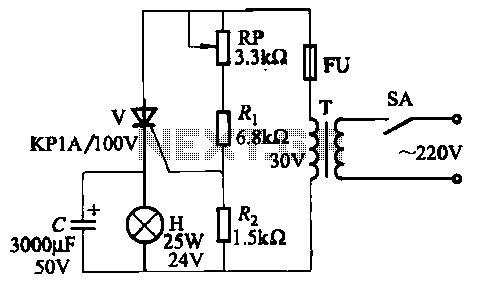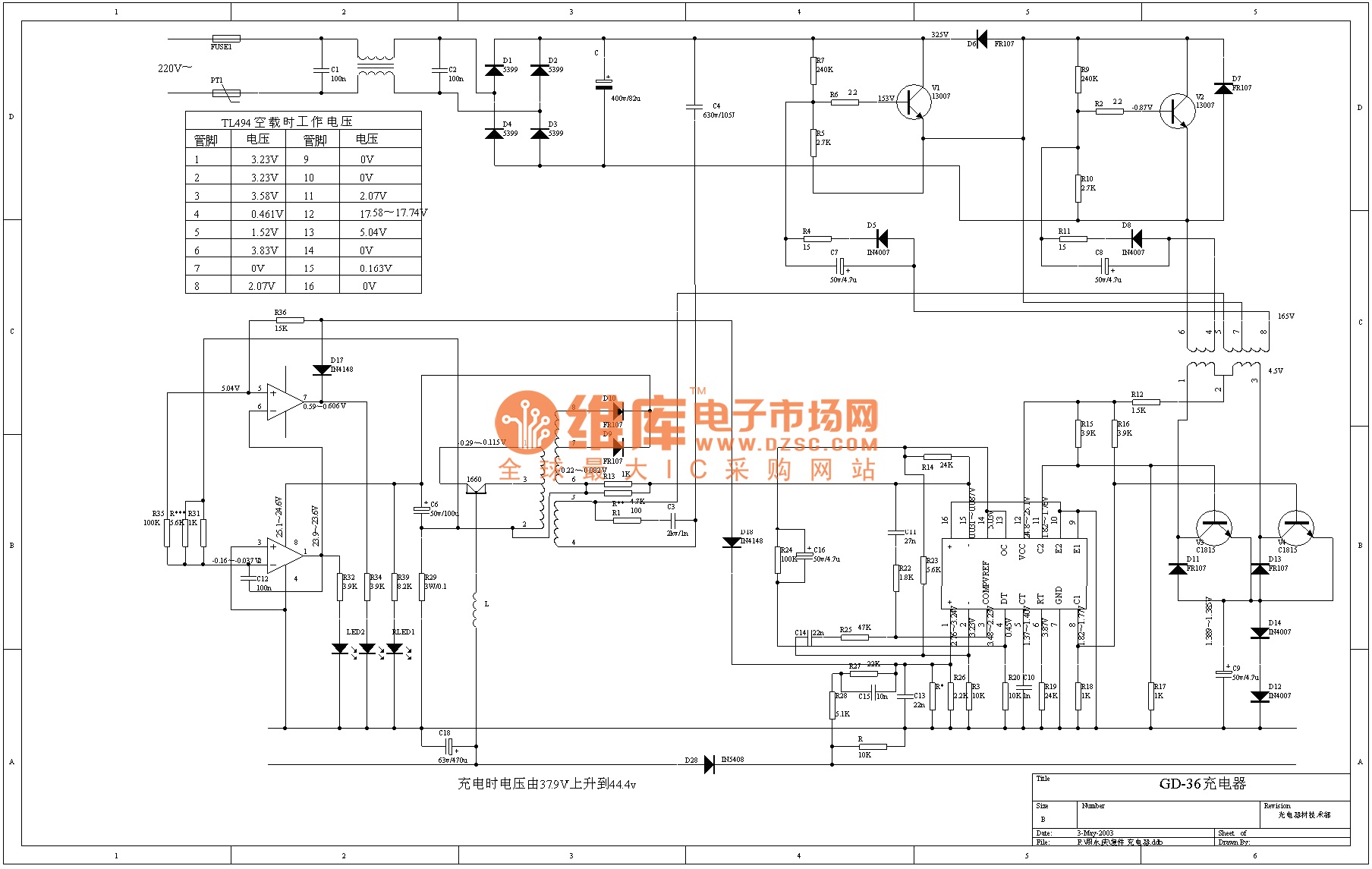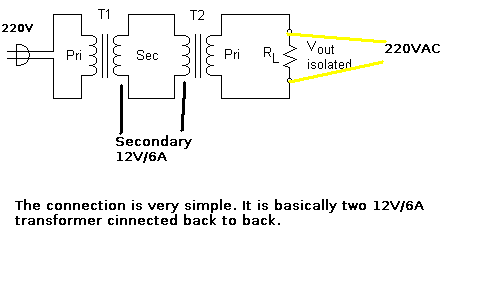
With a CD4011 CD4518 making colorful cycle decorative lights

A colorful decorative lights loop circuit is depicted. It includes a power conversion circuit, a clock signal generator, and a color and lighting control circuit comprising several components. The circuit operates from a 220V AC source, which is rectified by diodes VD1 to VD4, supplying power to the lantern loop. Additionally, resistor R1 reduces voltage, while diode VD6 regulates and diode VD5 filters and isolates the control circuit, providing a stable DC voltage of approximately 10V. A clock signal generator is formed using NAND gate I, resistors R2, R3, and capacitor C2, which create a multi-resonant oscillator. NAND gate I is also part of an RS flip-flop, shaping the pulse oscillator output that feeds into the clock pulse input CP of A2. A2 is a CMOS digital integrated circuit with dual synchronous addition counting functionality. The positive pulse and signals from NAND gate I are processed into internal binary coding, resulting in three-state output changes on Q1, Q2, and Q3, which control the lighting sequence. This arrangement allows for the production of seven distinct external light colors based on the principles of additive color mixing, as detailed in Table 3-1. For instance, upon receiving the first clock pulse, Q1 on A2 outputs high, triggering thyristor VS1 to conduct, illuminating lamp H1 in red. The second pulse activates Q2, turning on H2 in green. When the third pulse arrives, Q1 and Q2 conduct simultaneously, causing both H1 and H2 to light up, producing yellow light through color mixing. After the eighth clock pulse, Q1 to Q3 output low, extinguishing all lamps, while Q4 outputs high to reset the internal circuit of A2. The cycle repeats with the arrival of the ninth clock pulse.
The circuit is designed to provide a visually appealing light display through the use of a microcontroller and other electronic components. The power conversion section is critical, as it transforms high-voltage AC into a stable low-voltage DC that powers the control circuit. The rectification process using diodes ensures that the AC input is converted efficiently, while the filtering and regulation components maintain a consistent voltage level necessary for reliable operation.
The clock signal generator is an essential aspect of the circuit, enabling precise timing control for the lighting sequence. The multi-resonant oscillator formed by the NAND gate and passive components creates a square wave output that serves as the timing reference for the entire system. The RS flip-flop configuration ensures that the output states are stable and only change in response to the clock pulses, allowing for predictable and repeatable light patterns.
The use of CMOS technology in the A2 integrated circuit provides low power consumption and high-speed operation, making it suitable for applications involving complex light control. The three-state outputs (Q1, Q2, Q3) allow for various combinations of light activation, facilitating the creation of different colors through additive mixing. This method of color generation is fundamental in applications such as decorative lighting, where visual effects are paramount.
Furthermore, the design incorporates safety features, such as voltage limiting and isolation, to protect the control circuitry from potential over-voltage conditions. The thyristors used for lamp control are chosen for their ability to handle high currents, ensuring reliable operation of the decorative lights. Overall, this circuit exemplifies an effective approach to creating dynamic lighting effects using electronic control systems. Colorful decorative lights loop circuit shown in Figure 3-22. It consists of the power conversion circuit, a clock signal generator toner color and lighting control circuit of several components. 220V AC after VD1 ~ VD4 bridge rectifier, on the one hand lantern loop for power; on the other hand by Rl buck limit, VD6 regulator, VD5 cl filtering and isolation for the control circuit to provide a stable DC voltage of about lov. Al and peripheral components of a clock signal generator, wherein the NAND gate I, and RP, R3 and C2 form multi-resonant oscillator, NAND gate I, t constitute RS flip-flop, pulse oscillator for shaping then the NAND gate delivery to the clock pulse input CP of A2.
A2 is a CMOS digital integrated circuits with dual synchronous addition counting function, the positive pulse and the NAND gate t sent in its internal binary coding, and Ql, Q2, Q3 output of the three state circulation changes occur in combination, make along with the corresponding lights on, off. According to the principle of the three primary colors of light, it will be able to produce seven kinds of color of external light, specifically as shown in Table 3-1.
For example, when a first clock pulse, Ql end A2 output high, single red light to the thyristor VS1 conduction, lantern Hl; when the second pulse arrives, Q2 ended output high-A2 level, VS2 subsequently turned, H2 glows green; when the third clock pulse, Ql A2, Q2 of simultaneously output high. vsl, VS2 are conduction, Hl, H2 lit simultaneously, according to the principles of color mixing, external light turns yellow when {.
eighth clock pulse rushed to come, QI A2 of ~ Q3 output low level, H1 ~ H3 put out the whole moment; while Q4 terminal A2 output high power level, the signal is directly sent eight clear terminal R, so A2 internal circuit is reset; when the first nine clock pulses into A2, cycle the process.
The circuit is designed to provide a visually appealing light display through the use of a microcontroller and other electronic components. The power conversion section is critical, as it transforms high-voltage AC into a stable low-voltage DC that powers the control circuit. The rectification process using diodes ensures that the AC input is converted efficiently, while the filtering and regulation components maintain a consistent voltage level necessary for reliable operation.
The clock signal generator is an essential aspect of the circuit, enabling precise timing control for the lighting sequence. The multi-resonant oscillator formed by the NAND gate and passive components creates a square wave output that serves as the timing reference for the entire system. The RS flip-flop configuration ensures that the output states are stable and only change in response to the clock pulses, allowing for predictable and repeatable light patterns.
The use of CMOS technology in the A2 integrated circuit provides low power consumption and high-speed operation, making it suitable for applications involving complex light control. The three-state outputs (Q1, Q2, Q3) allow for various combinations of light activation, facilitating the creation of different colors through additive mixing. This method of color generation is fundamental in applications such as decorative lighting, where visual effects are paramount.
Furthermore, the design incorporates safety features, such as voltage limiting and isolation, to protect the control circuitry from potential over-voltage conditions. The thyristors used for lamp control are chosen for their ability to handle high currents, ensuring reliable operation of the decorative lights. Overall, this circuit exemplifies an effective approach to creating dynamic lighting effects using electronic control systems. Colorful decorative lights loop circuit shown in Figure 3-22. It consists of the power conversion circuit, a clock signal generator toner color and lighting control circuit of several components. 220V AC after VD1 ~ VD4 bridge rectifier, on the one hand lantern loop for power; on the other hand by Rl buck limit, VD6 regulator, VD5 cl filtering and isolation for the control circuit to provide a stable DC voltage of about lov. Al and peripheral components of a clock signal generator, wherein the NAND gate I, and RP, R3 and C2 form multi-resonant oscillator, NAND gate I, t constitute RS flip-flop, pulse oscillator for shaping then the NAND gate delivery to the clock pulse input CP of A2.
A2 is a CMOS digital integrated circuits with dual synchronous addition counting function, the positive pulse and the NAND gate t sent in its internal binary coding, and Ql, Q2, Q3 output of the three state circulation changes occur in combination, make along with the corresponding lights on, off. According to the principle of the three primary colors of light, it will be able to produce seven kinds of color of external light, specifically as shown in Table 3-1.
For example, when a first clock pulse, Ql end A2 output high, single red light to the thyristor VS1 conduction, lantern Hl; when the second pulse arrives, Q2 ended output high-A2 level, VS2 subsequently turned, H2 glows green; when the third clock pulse, Ql A2, Q2 of simultaneously output high. vsl, VS2 are conduction, Hl, H2 lit simultaneously, according to the principles of color mixing, external light turns yellow when {.
eighth clock pulse rushed to come, QI A2 of ~ Q3 output low level, H1 ~ H3 put out the whole moment; while Q4 terminal A2 output high power level, the signal is directly sent eight clear terminal R, so A2 internal circuit is reset; when the first nine clock pulses into A2, cycle the process.





